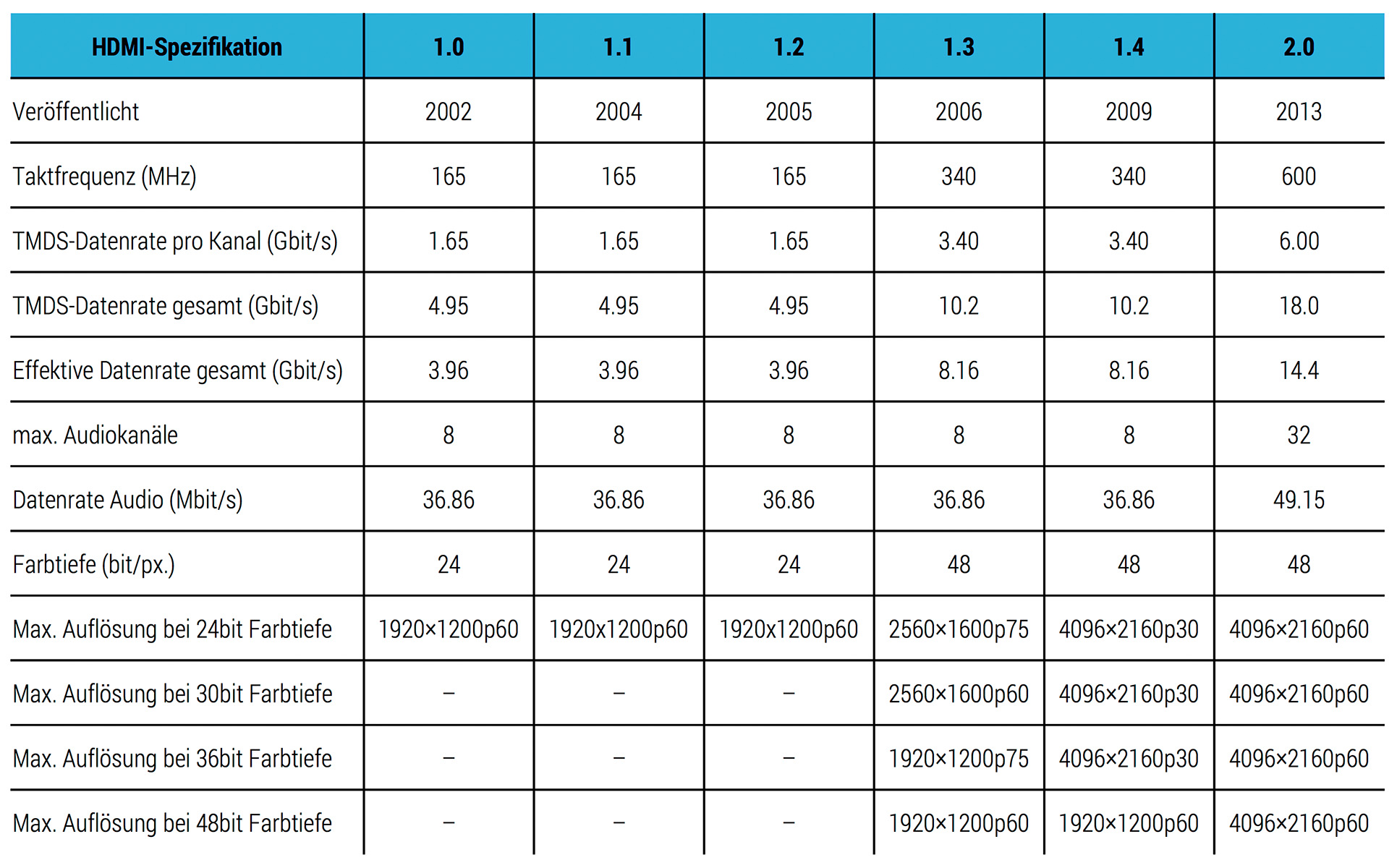Chaos 2.0 - The New Standards of HDMI and HDCP

Long announced, eagerly awaited, finally available—but unfortunately, the new HDMI 2.0 standard creates more problems than it solves. TVs and projectors with 4K or UHD resolution will only be able to show their full potential when true, high-quality 4K content is available. Where this content will come from and how it will be provided in the future is still largely unknown, but one thing seems certain: it will often be delivered via an external device, and for that you need an HDMI connection. The most current HDMI specification until recently, 1.4, is in fact already suitable for 4K material, but due to data rate limitations, it is only designed for frame rates up to 30 frames per second. Not least because of this, manufacturers of TVs and AV receivers have been eagerly awaiting the adoption of the next HDMI standard, HDMI 2.0. This is now official, and the first devices with HDMI 2.0 are available.
Progress with Obstacles
At first, it all sounds wonderful: with an increase in data throughput to 18 gigabits per second (HDMI 1.4: 10.2 Gbps), there is now enough bandwidth for 4K images at 60 frames per second. The possible color depth also increases to 12 bit or 70 million colors (HDMI 1.4: 8 bit or 16.7 million colors), and even 3D images in 4K resolution are now possible. In parallel, HDMI 2.0 can transmit up to 32 uncompressed audio channels and is thus already prepared for new sound formats like Dolby Atmos, DTS UHD, and Auro 3D. And perhaps the best news: no new cables are needed for HDMI 2.0! So, everything could have turned out really well. But the HDMI Forum has a reputation to uphold, and accordingly, they have come up with a few things in this case, too, that turn a really good idea into an incomprehensible mess for the average user. On the one hand, manufacturers have been given such a wide scope in implementing the 2.0 specifications that not all HDMI 2.0 devices must offer the same features or performance. On the other hand, the new version 2.2 of the digital copy protection HDCP brings its own set of complications. To make matters worse, HDCP 2.2 is not even part of the HDMI 2.0 standard, allowing for countless confusing combinations of the two technologies. Confused? So are we!
HDMI Specifications, Bandwidth and Resolution
HDCP 2.2 – More Protection, More Confusion
From the rights holders’ perspective, HDCP 2.2 has become necessary to effectively protect future 4K content from illegal copying, as all previous HDCP versions are considered cracked. HDCP 2.2 now uses new algorithms that are not backward compatible with older versions. In the future, this could mean that the transmission of protected 4K content will be blocked if even a single device in the playback chain does not support HDCP 2.2. Remembering the problems the copy protection handshake has already caused in the past, one can expect even more challenges ahead...
All Set After the Update... Or Not?
So, let's start from the beginning. TVs with genuine HDMI 2.0 ports are currently few and far between. However, for some of their 4K devices that officially feature HDMI 1.4, companies like Sony and Toshiba promise a free software update to 2.0. That sounds like good news and would be, if those products already had HDMI chips fast enough to handle the higher data rates. Unfortunately, it is also quite possible that the software update will simply reduce or limit color depth or resolution, which would still provide enough bandwidth for 4K transmission at 60fps. We’ll just have to wait and see until the update is actually available. Owners of Sony’s 85-inch models or the high-end projector VPL-VW1000ES will face a bigger effort. Here, too, an update is promised, but it will not be limited to software; new hardware is also required, which must be replaced by Sony’s service. Prices for such upgrades are not yet known, but it’s unlikely to be free. Samsung, from the beginning, has used an external connection box for its UHD TVs. This at least makes future updates easier, but whether and how much they will cost owners remains to be seen. Numerous other TV manufacturers, such as Sharp and LG, have so far not commented on the topic of “upgrading to HDMI 2.0.”
False Labeling?
And even if updates become available or ‘real’ HDMI 2.0 devices appear on the market, you still need to look very closely. The specification actually only refers to the maximum possible data throughput, not to the supported features. In other words, not everywhere that says ‘HDMI 2.0’ on the outside, is the same thing inside. In recent weeks, several AV receivers have become available that, according to their technical data, already have HDMI 2.0, but caution is advised here as well. In most cases, for cost reasons, only one HDMI input meets the new specifications, while the others are ‘conventional’ 1.4 variants. So, if you ever want to connect several 4K sources, you’ll have to buy a new receiver. On the other hand, there are other devices, such as those from Onkyo, that are promoted with HDCP 2.2 and actually support the new copy protection. However, as far as we know, they do not have HDMI 2.0 inputs, so they can only partially support future 4K sources.
